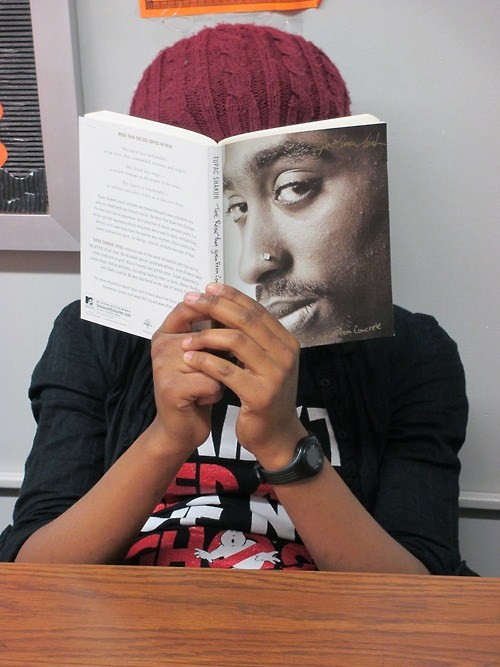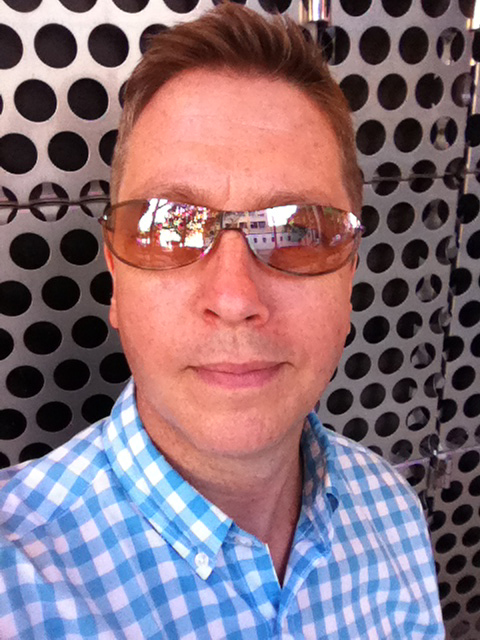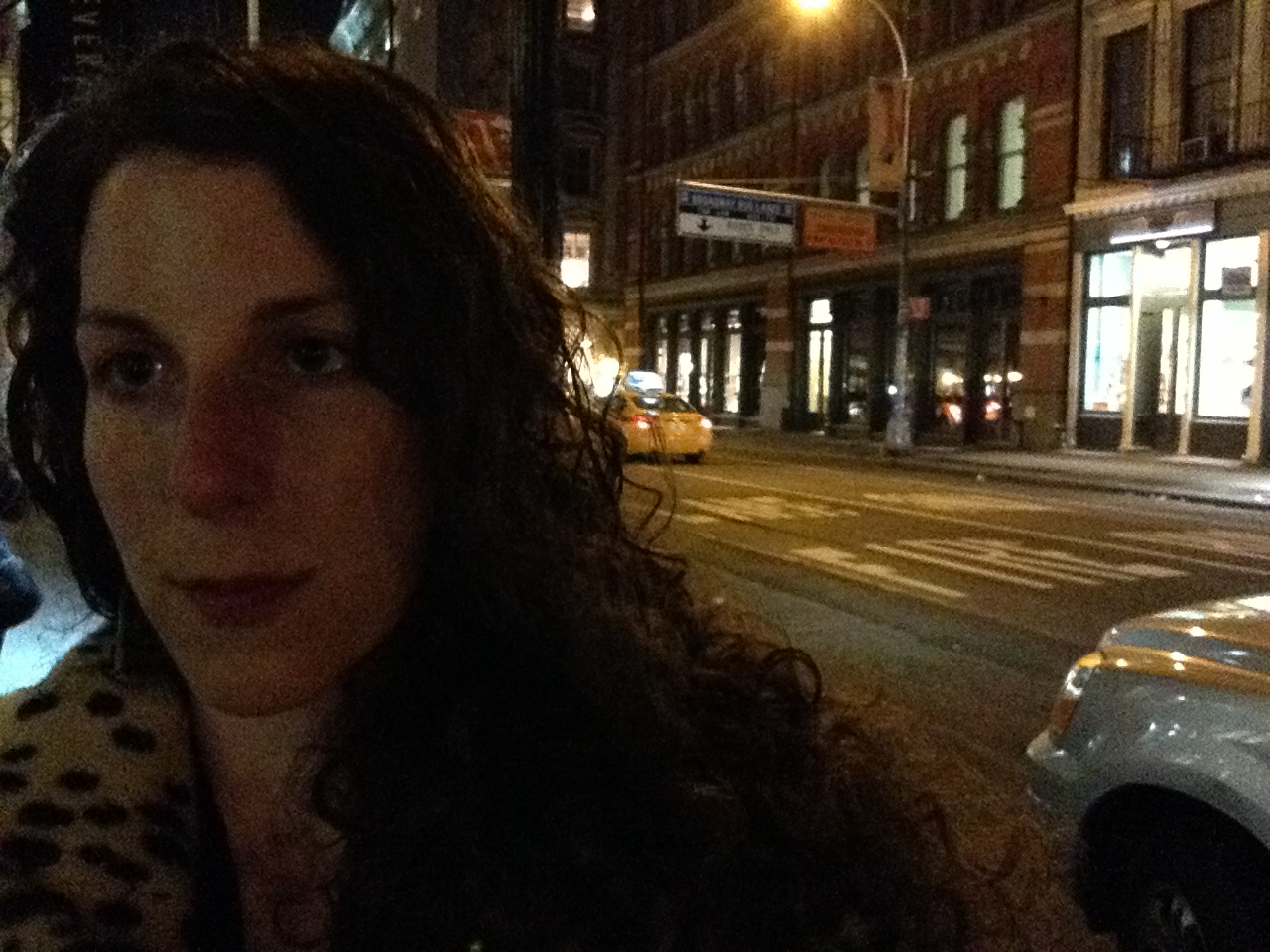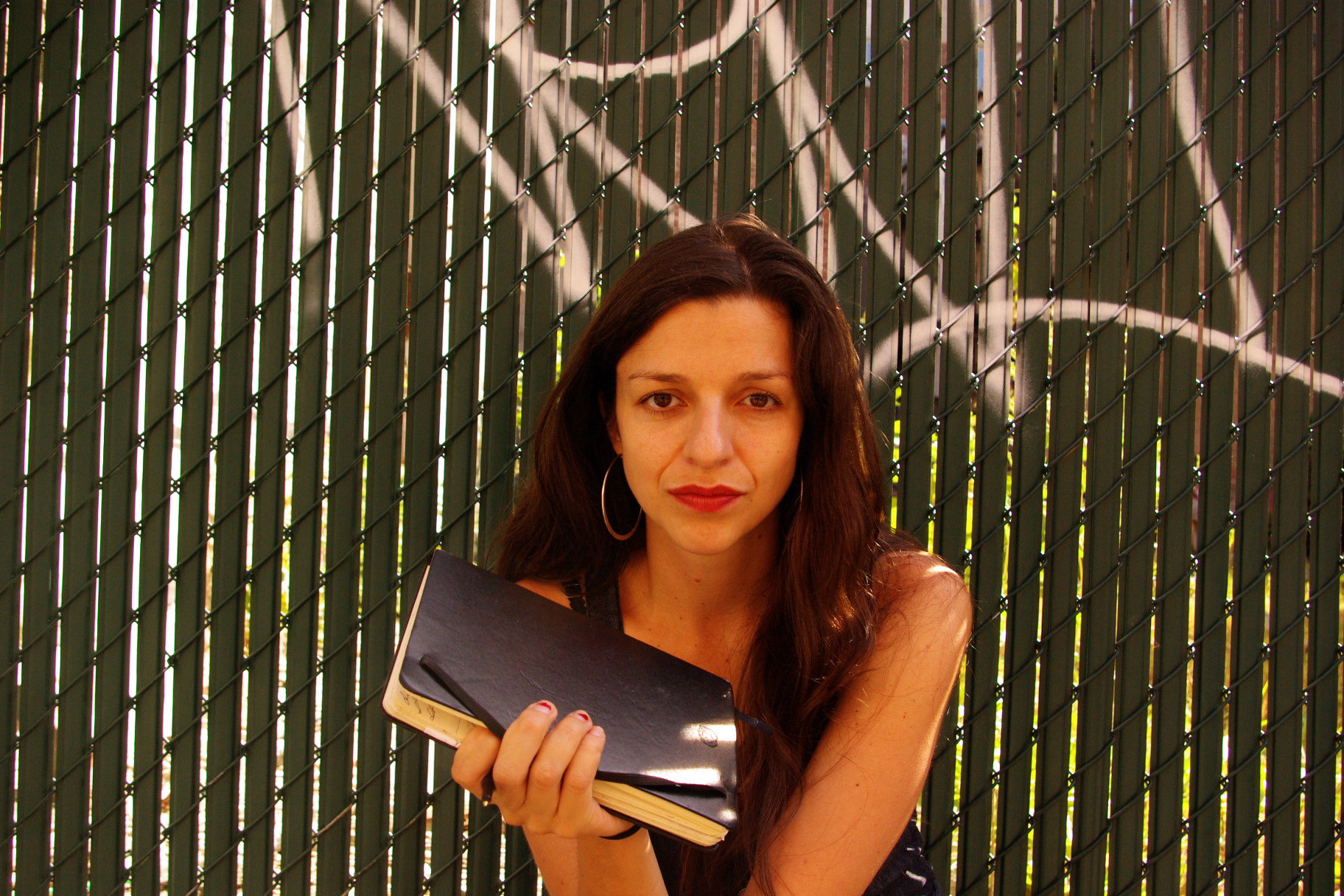Amanda Deutch on Bringing Site-Specific Poetry to Coney Island
Poet and artist Amanda Deutch blogs about her P&W–supported poetry and arts festival, Parachute: the Coney Island Performance Festival. She is the author of four chapbooks: Gena Rowlands, Box of Sky: Skeleton Poems, Motel Drift, and The Subway Series. She is also the recipient of a 2007 Footpaths to Creativity Fellowship to write in the Azores Archipelago.
“Long ago when I was a young man, Coney Island was a favorite spot. At that time, Coney Island had not the reputation it has now.”—Walt Whitman
 I had an idea to have a free community-based poetry and arts festival in Coney Island, a neighborhood on the edge of a city. The festival would incorporate site-specific poetry, free workshops, and readings in a spectacular location. I wanted to create a space where people who had written about Coney Island could come and read and share their words about the place. Coney Island is a neighborhood with a vivid art and literary history, and for me it holds significant family history. My mother’s family lived in Coney Island, on 29th between Mermaid and Surf, for almost twenty years, from the 1920s to the 1950s. Ever since hearing my grandmother Betty first say the words, “Half Moon Hotel,” "Abe Reles," and "meshugana," Coney Island held a poetic resonance for me. I wanted to spend as much time as possible in the place where this Half Moon Hotel once towered with views of the Atlantic and a 150-foot ferris wheel could be landmarked.
I had an idea to have a free community-based poetry and arts festival in Coney Island, a neighborhood on the edge of a city. The festival would incorporate site-specific poetry, free workshops, and readings in a spectacular location. I wanted to create a space where people who had written about Coney Island could come and read and share their words about the place. Coney Island is a neighborhood with a vivid art and literary history, and for me it holds significant family history. My mother’s family lived in Coney Island, on 29th between Mermaid and Surf, for almost twenty years, from the 1920s to the 1950s. Ever since hearing my grandmother Betty first say the words, “Half Moon Hotel,” "Abe Reles," and "meshugana," Coney Island held a poetic resonance for me. I wanted to spend as much time as possible in the place where this Half Moon Hotel once towered with views of the Atlantic and a 150-foot ferris wheel could be landmarked.
Years ago, when I told a good friend my idea to have a festival, he said, “Go for it.” That’s how a lot of things get started in my life, simply with an inspiration and a good friend saying, “Go for it.” I suppose I am lucky to have such good friends and perhaps a little bit of raw nerve. My idea has grown into a nonprofit, Parachute: the Coney Island Performance Festival. I have been able to invite some of the most innovative, incredible, and groundbreaking New York City poets and writers to come and read in Coney Island’s New York Aquarium in front of sea nettle jellyfish—not your typical space for a poetry reading—for an audience that is not your typical poetry audience. Our festival’s audience consists of “regular folks.” We invite mostly native New Yorker writers who are pushing boundaries in the field of poetry. I have had the opportunity, through Poets & Writers’ Readings/Workshops Program, to offer writers a small fee to read and to give a writing workshop during the festival. Brooklyn-based poet Patricia Spears Jones read at the debut festival and lead a free writing workshop for adults at the Mermaid Avenue Library. She enjoyed the experience so much that she came back again and would like to continue leading workshops for us. This symbiotic relationship between artists and the community is just what I was after. Award-winning poet Cara Benson recently said, “How could I ever forget reading there?” I have often thought, "Why can’t poetry readings be in incredible aesthetic environments? Why not have site- specific poetry?" So here you have site-specific poetry!
Many writers reading for the festival have already written prose or poetry about Coney Island. If they haven’t, I encourage writers to create a new Coney Island work especially for Parachute: the Coney Island Performance Festival. Edwin Torres (mentioned in a previous post) came and surprised everyone by reading a rare autobiographical poem, “Coney Island 1969,” that was more narrative than most of his experimental poetry. The poem spoke of his father coming from the Bronx to work as a manager at Nathan’s in Coney Island when he was a little boy growing up in New York City!
This past year we incorporated an audio installation of a poem by the world renowned Bronx born, architect, artist and poet Vito Acconci into the festival. With the help of the Aquarium staff, I placed it outdoors for two evenings in the New York Aquarium’s plaza, beside the penguins. One of the truly spectacular spatial relationships is that Vito’s firm Acconci Studios designed the sculptural art, “Wave-A-Wall,” on the West 8th subway station right across the street! So you could hear his poem “Antarctica” in a small nook beside the penguins while watching the sky change colors right across the street from one of his art commissions.
We also had the ticket-takers who work in the Eldorado Bumper Cars ticket booth on Surf Avenue Trudy and Louis read Coney Island poetry on the mic. Just yesterday Louis stopped me on the street and said, "Hey, when are we doing that again? I got some poetry I want to read and found some poets who would like to get on the mic, too."
Parachute: the Coney Island Performance Festival brings site-specific poetry, installations, symbiosis, and local New York City writers waxing poetic about Nathan’s—all for less than the price of a hot dog. It's free!
Photo: Cara Benson, Amanda Deutch, and Edwin Torres.
Support for Readings/Workshops in New York City is provided, in part, by public funds from the New York State Council on the Arts and the New York City Department of Cultural Affairs, with additional support from the Louis & Anne Abrons Foundation, the Axe-Houghton Foundation, The Cowles Charitable Trust, the Abbey K. Starr Charitable Trust, and the Friends of Poets & Writers.





 13 I put out a call for poetry books to create a lending library for the YWCA after-school teen empowerment program where
13 I put out a call for poetry books to create a lending library for the YWCA after-school teen empowerment program where  eeks ago and said, “Miguel Pinero, he’s the realest.” I said, “Yeah, his poetry changed the course of my life. Before that all I ever saw was poetry about daisies, not that I don’t like daisies. We don’t have any books of his, yet, but why don’t you read Sheila Maldonado? She’s a local poet, born around here.” He checked her book out of our new burgeoning library (and made my day). There are so many interactions like this. Maya is a thirteen-year-old student at the writing workshop. She soaks up information and is very talented. One day she came in asking me about a poem she’d seen that looked like an eye. We had a conversation about the French poet Guillaume Apollinaire and for the next week’s class I brought in one of his books. She poured over the pages and held it up saying, “This one is my favorite.” I instantly got chills and realized, here I was in a classroom in Brooklyn, in Coney Island, discussing surrealist French poetry with a thirteen-year-old girl.
eeks ago and said, “Miguel Pinero, he’s the realest.” I said, “Yeah, his poetry changed the course of my life. Before that all I ever saw was poetry about daisies, not that I don’t like daisies. We don’t have any books of his, yet, but why don’t you read Sheila Maldonado? She’s a local poet, born around here.” He checked her book out of our new burgeoning library (and made my day). There are so many interactions like this. Maya is a thirteen-year-old student at the writing workshop. She soaks up information and is very talented. One day she came in asking me about a poem she’d seen that looked like an eye. We had a conversation about the French poet Guillaume Apollinaire and for the next week’s class I brought in one of his books. She poured over the pages and held it up saying, “This one is my favorite.” I instantly got chills and realized, here I was in a classroom in Brooklyn, in Coney Island, discussing surrealist French poetry with a thirteen-year-old girl. For a relatively small city, Seattle has a thriving literary community. What do you attribute this to?
For a relatively small city, Seattle has a thriving literary community. What do you attribute this to? Celebrities flash everywhere: billboards, newspapers, computer screens, televisions. We live in a KarGaGaianBieber glowing orb of a virtual society. They suggest what we buy, how we dress, how we live, and what we consider beautiful. Unfortunately, Warhol’s prediction of fifteen minutes of celebrity fame has drawn out to become several hours of fame and in some cases, even years of it. Like it or not, we know celebrity's faces, their favorite coffee drinks, and the names of their pet monkeys.
Celebrities flash everywhere: billboards, newspapers, computer screens, televisions. We live in a KarGaGaianBieber glowing orb of a virtual society. They suggest what we buy, how we dress, how we live, and what we consider beautiful. Unfortunately, Warhol’s prediction of fifteen minutes of celebrity fame has drawn out to become several hours of fame and in some cases, even years of it. Like it or not, we know celebrity's faces, their favorite coffee drinks, and the names of their pet monkeys.
 From street signs to carnival talkers, from the Chief hawking fresh clams with a call of, “Hey! Get it! Get it!” to the influx of monarch butterflies in late August, there is poetry in the everyday language that surrounds us. I want people to stop and notice poetry in daily motions. That’s part of my job as a poet.
From street signs to carnival talkers, from the Chief hawking fresh clams with a call of, “Hey! Get it! Get it!” to the influx of monarch butterflies in late August, there is poetry in the everyday language that surrounds us. I want people to stop and notice poetry in daily motions. That’s part of my job as a poet.  The
The  I have spent much of the last week with Sabrina Chap. I organized two events while she was in Seattle, and I enjoyed the conversations in between as much as the workshop and lecture. Sabrina is very open and encouraging when it comes to difficult subjects. She makes it suddenly okay to talk about topics such as grief and self-destruction that our society says are shameful. Her book
I have spent much of the last week with Sabrina Chap. I organized two events while she was in Seattle, and I enjoyed the conversations in between as much as the workshop and lecture. Sabrina is very open and encouraging when it comes to difficult subjects. She makes it suddenly okay to talk about topics such as grief and self-destruction that our society says are shameful. Her book  Why poetry? I’m asked frequently, which brings me to ask myself the same question. I imagine the typical inquisitor thinks poetry as gilded, arcane, highfalutin'. As it is, it has taken me years to be comfortable saying that I’m a poet. To this day there’s still a tiny level of discomfort, uttering the—what? title, character, state of being? What does it mean to be a poet? Poetry is not a career nor is it employment that pay the bills. It's not a marker of identity like gender or nationality. What is it that you do? Americans love to ask. I write poems. But not all the time. Not the same amount of hours as my day job, and my other jobs.
Why poetry? I’m asked frequently, which brings me to ask myself the same question. I imagine the typical inquisitor thinks poetry as gilded, arcane, highfalutin'. As it is, it has taken me years to be comfortable saying that I’m a poet. To this day there’s still a tiny level of discomfort, uttering the—what? title, character, state of being? What does it mean to be a poet? Poetry is not a career nor is it employment that pay the bills. It's not a marker of identity like gender or nationality. What is it that you do? Americans love to ask. I write poems. But not all the time. Not the same amount of hours as my day job, and my other jobs.